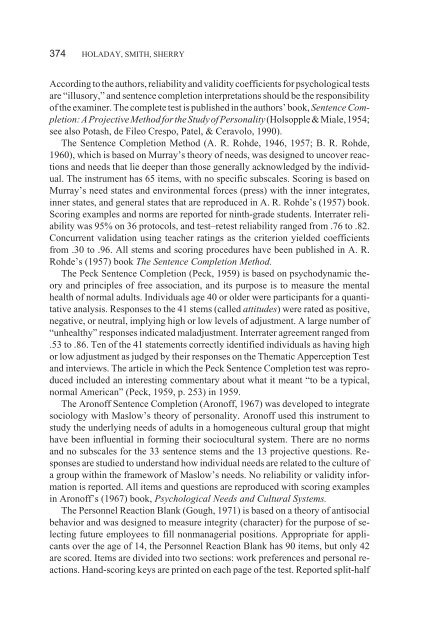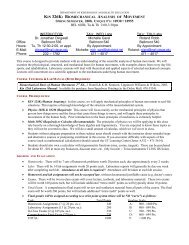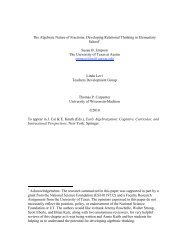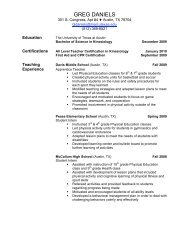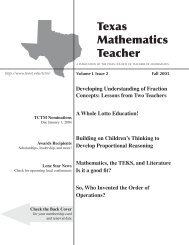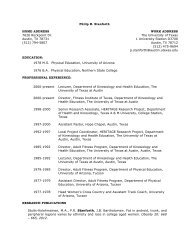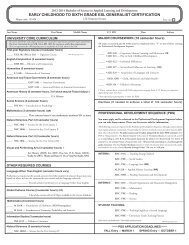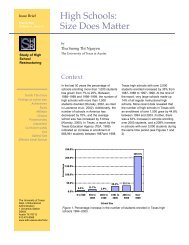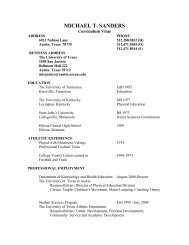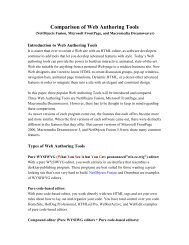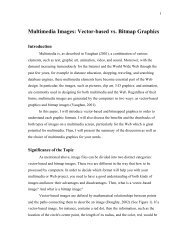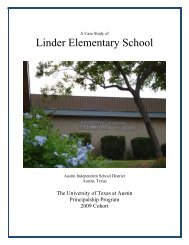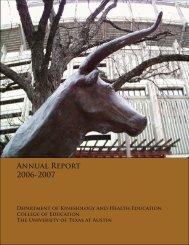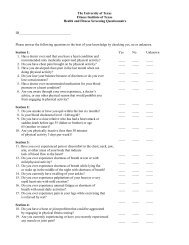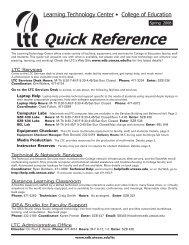Sentence Completion Tests: A Review of the Literature and Results ...
Sentence Completion Tests: A Review of the Literature and Results ...
Sentence Completion Tests: A Review of the Literature and Results ...
Create successful ePaper yourself
Turn your PDF publications into a flip-book with our unique Google optimized e-Paper software.
374 HOLADAY, SMITH, SHERRY<br />
According to <strong>the</strong> authors, reliability <strong>and</strong> validity coefficients for psychological tests<br />
are “illusory,” <strong>and</strong> sentence completion interpretations should be <strong>the</strong> responsibility<br />
<strong>of</strong> <strong>the</strong> examiner. The complete test is published in <strong>the</strong> authors’ book, <strong>Sentence</strong> <strong>Completion</strong>:AProjectiveMethodfor<strong>the</strong>Study<strong>of</strong>Personality(Holsopple&Miale,1954;<br />
see also Potash, de Fileo Crespo, Patel, & Ceravolo, 1990).<br />
The <strong>Sentence</strong> <strong>Completion</strong> Method (A. R. Rohde, 1946, 1957; B. R. Rohde,<br />
1960), which is based on Murray’s <strong>the</strong>ory <strong>of</strong> needs, was designed to uncover reactions<br />
<strong>and</strong> needs that lie deeper than those generally acknowledged by <strong>the</strong> individual.<br />
The instrument has 65 items, with no specific subscales. Scoring is based on<br />
Murray’s need states <strong>and</strong> environmental forces (press) with <strong>the</strong> inner integrates,<br />
inner states, <strong>and</strong> general states that are reproduced in A. R. Rohde’s (1957) book.<br />
Scoring examples <strong>and</strong> norms are reported for ninth-grade students. Interrater reliability<br />
was 95% on 36 protocols, <strong>and</strong> test–retest reliability ranged from .76 to .82.<br />
Concurrent validation using teacher ratings as <strong>the</strong> criterion yielded coefficients<br />
from .30 to .96. All stems <strong>and</strong> scoring procedures have been published in A. R.<br />
Rohde’s (1957) book The <strong>Sentence</strong> <strong>Completion</strong> Method.<br />
The Peck <strong>Sentence</strong> <strong>Completion</strong> (Peck, 1959) is based on psychodynamic <strong>the</strong>ory<br />
<strong>and</strong> principles <strong>of</strong> free association, <strong>and</strong> its purpose is to measure <strong>the</strong> mental<br />
health <strong>of</strong> normal adults. Individuals age 40 or older were participants for a quantitative<br />
analysis. Responses to <strong>the</strong> 41 stems (called attitudes) were rated as positive,<br />
negative, or neutral, implying high or low levels <strong>of</strong> adjustment. A large number <strong>of</strong><br />
“unhealthy” responses indicated maladjustment. Interrater agreement ranged from<br />
.53 to .86. Ten <strong>of</strong> <strong>the</strong> 41 statements correctly identified individuals as having high<br />
or low adjustment as judged by <strong>the</strong>ir responses on <strong>the</strong> Thematic Apperception Test<br />
<strong>and</strong> interviews. The article in which <strong>the</strong> Peck <strong>Sentence</strong> <strong>Completion</strong> test was reproduced<br />
included an interesting commentary about what it meant “to be a typical,<br />
normal American” (Peck, 1959, p. 253) in 1959.<br />
The Aron<strong>of</strong>f <strong>Sentence</strong> <strong>Completion</strong> (Aron<strong>of</strong>f, 1967) was developed to integrate<br />
sociology with Maslow’s <strong>the</strong>ory <strong>of</strong> personality. Aron<strong>of</strong>f used this instrument to<br />
study <strong>the</strong> underlying needs <strong>of</strong> adults in a homogeneous cultural group that might<br />
have been influential in forming <strong>the</strong>ir sociocultural system. There are no norms<br />
<strong>and</strong> no subscales for <strong>the</strong> 33 sentence stems <strong>and</strong> <strong>the</strong> 13 projective questions. Responses<br />
are studied to underst<strong>and</strong> how individual needs are related to <strong>the</strong> culture <strong>of</strong><br />
a group within <strong>the</strong> framework <strong>of</strong> Maslow’s needs. No reliability or validity information<br />
is reported. All items <strong>and</strong> questions are reproduced with scoring examples<br />
in Aron<strong>of</strong>f’s (1967) book, Psychological Needs <strong>and</strong> Cultural Systems.<br />
The Personnel Reaction Blank (Gough, 1971) is based on a <strong>the</strong>ory <strong>of</strong> antisocial<br />
behavior <strong>and</strong> was designed to measure integrity (character) for <strong>the</strong> purpose <strong>of</strong> selecting<br />
future employees to fill nonmanagerial positions. Appropriate for applicants<br />
over <strong>the</strong> age <strong>of</strong> 14, <strong>the</strong> Personnel Reaction Blank has 90 items, but only 42<br />
are scored. Items are divided into two sections: work preferences <strong>and</strong> personal reactions.<br />
H<strong>and</strong>-scoring keys are printed on each page <strong>of</strong> <strong>the</strong> test. Reported split-half


